2012.08.28 20:59
The Philadelphia School, deterritorialized
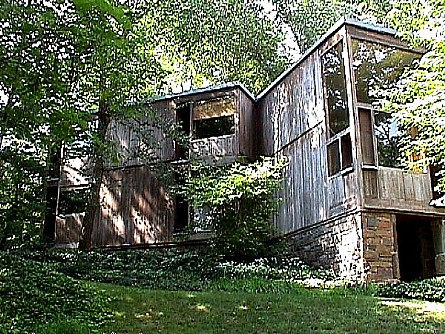
Spent a good part of this morning taking pictures around the exterior of Louis Kahn's Fisher House, in Hatboro, PA. Just by chance I found out last Friday that the house is currently on the market (and may actually be sold at this point), and the house is presently vacant. The exterior of the house is very nicely detailed, and still inspiring. It's also the plan of this house that inspired a collage technique I employ from time to time.
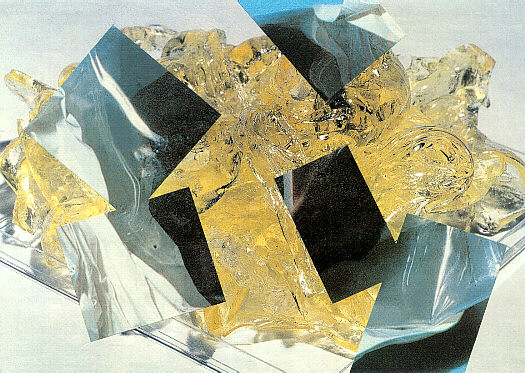
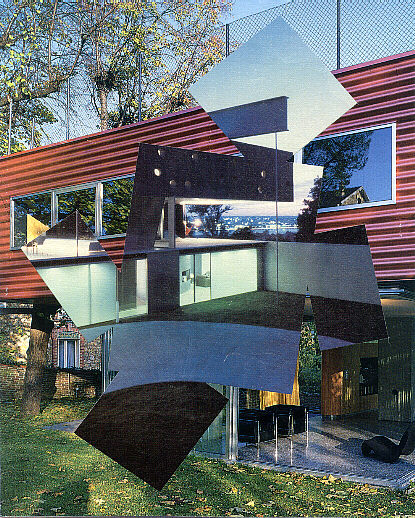
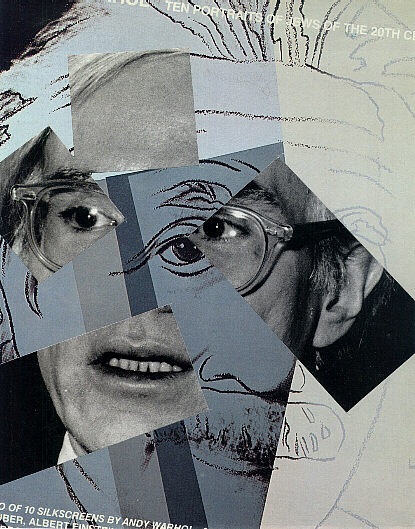
| |
2012.08.14 15:22
The Philadelphia School, deterritorialized
"Society teeth and a beard"
We went to Philadelphia a few times in '64 and '65. Sam Green knew a lot of people there, and carloads of us would drive down. In '65 Sam got made the director of exhibits at the Institute of Contemporary Art on the University of Pennsylvania campus. We used Philadelphia as a backdrop for a lot of the movies we shot, and we screened quite a lot of our movies down there, too. Sometimes Sam's rich distant cousin Henry McIlhenny would have dinners for us in his townhouse on Rittenhouse Square with a footman behind every chair and we'd be sitting there in Queens College sweatshirts. (Cecil Beaton was at one of those dinners and when I asked him if I could do his portrait, he said of course, so we went right upstairs and I drew his foot with a rose between his toes.)
When Sam started at the institute, there was an advisory board and a university governing thing, and a couple of governors wanted to have Gauguin and Renoir retrospectives. Sam told me, "Fortunately they don't have the budget to do anything that boring." What he suggested instead was that they have an Andy Warhol retrospective. They were very reluctant at first, so he told them that if they agreed to this Pop thing, they could all work on an Abstract Expressionist show next and wouldn't that be fun. Finally they decided that they couldn't make this decision themselves, they'd have to send a delegate up to New York to make it for them.
Sam had this good friend Lally Lloyd--her husband was H. (for Horatio) Gates Lloyd, one of the heads of the CIA, and she herself was a Biddle from the Main Line with a big estate. Sam introduced us at a dinner that the art dealer Alexandre Iolas gave for Nicky de St. Phalle at the Café Nicholson. (Right before the dinner he'd told me, "Now please don't do your monosyllabic shy act and ruin everything.") Mrs. Lloyd was telling me how flattering it was that I considering their tiny museum for a show (it would be my first nongallery show, actually) when out of the blue I asked her if she wanted to be in a movie.
"She asked you what she's have to do," Sam reminded me, "and when you deadpanned, 'Have sex with Sam,' she thought you were so outrageous that from then on everything went beautifully--and the main thing was she liked your work. And she got the museum advisory board to allot four thousand dollars for the exhibition. Of course, it wound up costing a lot more, but we raised the rest ourselves by getting you to do the Green Stamp poster for the exhibition and having blouses made out of silk printed up with Green Stamps on them, and there was even enough silk left over to make a tie for me. And then, remember, I wheedled actual labels out of the Campbell's Soup Company and printed the invitation for the October 7-November 21 [1965] exhibit on the back side of them."
Sam arranged about four solid months of publicity before the show. He got a few of our films screened in theaters around town and on the Penn campus, and he sent Philadelphia society reporters up to New York to interview us. "I've told them to make sure to get scandalous photos."
Sam had Society teeth and a beard and he especially liked Society ladies who were dying not to be stuffy anymore. He'd say things to them like "There's this madman named Warhol who brings this entourage into your house and apparently makes an entire movie in an afternoon. You must meet him." And since Sam knew about drag queens and offbeat things, the ladies thought he was fun. I met a lot of grand gals with Sam who were out looking for fun.
So Sam got Philadelphia reporters to come by with their notepads to glance around. In those practically no one tape-recorded news interviews; they took notes instead. I liked that better because when it got written up, it would always be different from what I'd actually said--and a lot more fun for me to read. Like if I'd said, "In the future everyone will be famous for fifteen minutes," it could come out, "In fifteen minutes everybody will be famous."
When we walked into the Philadelphia opening, there were floodlights turned on us and television camera. It was very hot and I was all in black--T-shirt, jeans, short jacket, what I always wore in those days--and the yellow-lens wraparound sun/ski glasses didn't keep the glare out; I wasn't ready for it.
There were four thousand kids packed into two rooms. They'd had to take all my paintings--my "retrospective"--off the walls because they were getting crushed. It was fabulous: an art opening with no art! Sam stood there in his white jacket and Green Stamp ties--the members of the advisory board were running around in their Green Stamp silk blouses--and told the press that nobody came to art openings to see the art anyway. The music was going full blast and all the kids were doing the jerk to songs like "Dancin' and Prancin'" and "It's All Over Now" and "You Really Turn Me On."
When the kids saw me and Edie walk in, they started actually screaming. I couldn't believe it--one day you're in an art gallery in Toronto and not one person comes in all day to see you, and then suddenly there are who get hysterical at the sight of you. It was crazy. Older people in evening gowns were next to kids in jeans. They had to lead us through the crowd--the only place we wouldn't get mobbed was on some iron stairs that lead up to a sealed-off door. They put guards at the bottom of the steps so nobody would rush us. All the people we came down from New York with were on these stairs--Paul, Gerard, Chuck Wein, Donald Lyons, David Bourdon, and Sam, too. Edie was wearing a pink Rudi Gernreich floor-length T-shirt dress made out of stretchy Lurex-type material. It had elastic sleeves that were supposed to stay rolled up but she unrolled one of them about twelve feet past her arm--perfect for this setup, because she could have a drink in one hand and be draping and dipping and dangling her sleeve over the heads of the crowd below. She was putting on the performance of her life. Every guy wanted to be up there with her--she was looking around for somebody she knew who was going to school down there, calling out to him and everything, and you could tell from the faces on all the boys that they were really envious of whoever it was.
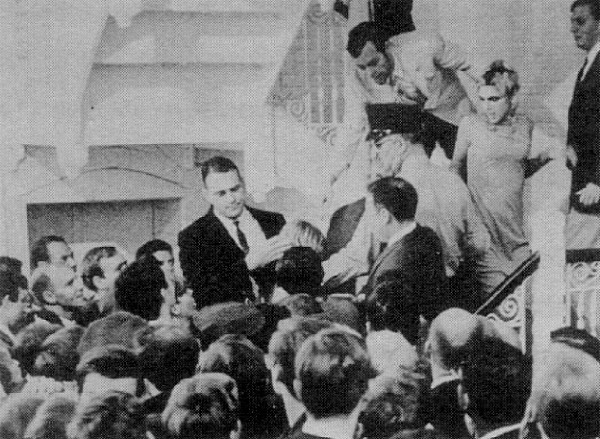
We were on those steps for at least two hours. People were passing things up to be autographed--shopping bags, candy wrappers, address books, train tickets, soup cans. I signed some things but Edie was signing most of them "Andy Warhol" herself. There was no way to leave--we knew we'd be mobbed as soon as we came down. Finally the officials ordered the fire department to break through the sealed door behind us with crowbars, and we were led out that way, through a library, onto the roof [of the very same building where the Philadelphia School happened, over an adjoining building, down a fire escape, and into waiting police cars. Now things were getting really interesting.
Andy Warhol, Pat Hackett, Popism: The Warhol '60s (1980).
| |
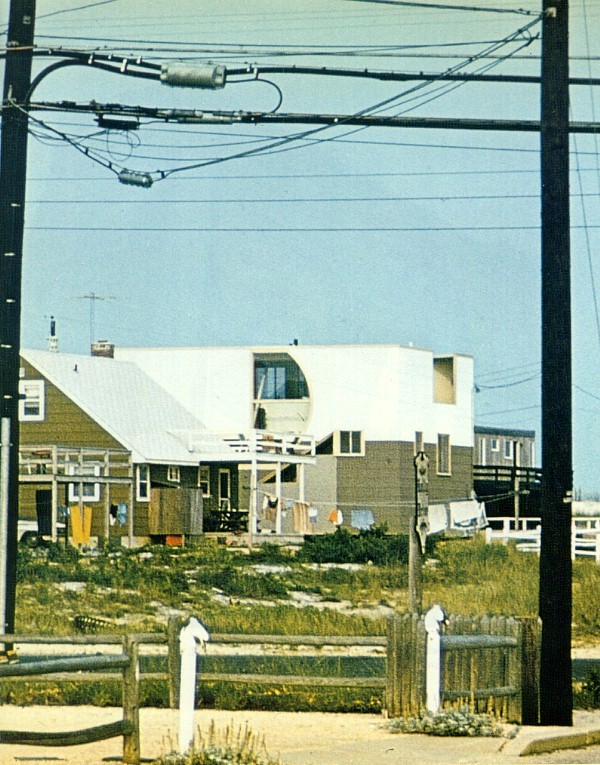
"The Lieb House [1969]," Denise Scott-Brown Venturi explained, "is ordinary and extraordinary at the same time. It is like the landscape and not like the landscape--ugly and beautiful. It is the tension between these opposites. We are saying it is like everything else; we admit that. It is like everything else in the way that the Pop artists make something like a Campbell's Soup can. It is like, but isn't like. See what I mean?"
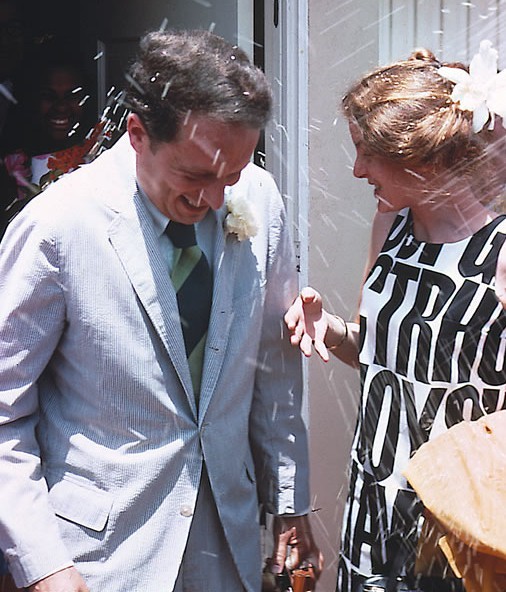
23 July 1967
Louis Kahn at the construction site of the Tribune Review Press building, circa 1961:
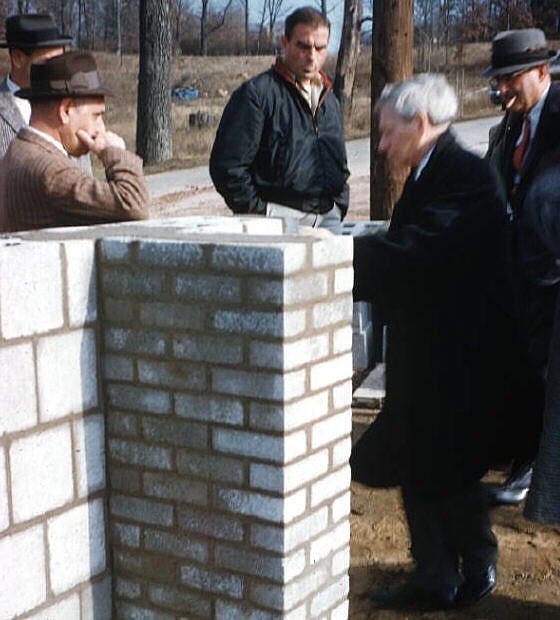
"Trust me guys, in the future everybody will be watching a television show where everyone looks and acts just like us, and it will be called Mad Men."
|